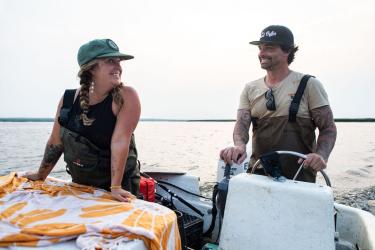Partners working to restore oyster reefs in the Chesapeake Bay made a lot of progress in 2021. Federal and state agencies, academic institutions, and nonprofit organizations are partnering in the Chesapeake Bay Program to restore oysters to 10 tributaries in the Bay by 2025. Their large-scale restoration efforts have yielded nearly 925 football fields’ worth of healthy habitat so far!
Other restoration highlights include:
- Restoration has been completed in six out of the 10 tributaries selected
- 1,220 acres have been restored out of the 1,770 acres targeted for restoration
- In Maryland, 5.43 billion spat-on-shell have been planted—697 million in 2021
- In Virginia, nearly 30 percent of the reefs constructed so far were constructed last year, making 2021 a banner year
Read the full update on oyster restoration in 2021
NOAA’s Role in Restoring the Bay
NOAA coordinates the efforts of the Maryland and Virginia Oyster Restoration Interagency Teams. These teams are responsible for identifying the tributaries for large-scale oyster restoration and then developing and implementing restoration plans for each area.
NOAA also plays important roles in oyster restoration in the Chesapeake Bay by providing much of the science needed to carry out effective and efficient restoration. We use sonar equipment to survey areas selected for restoration to identify the specific spots where restored reefs are most likely to succeed. And we monitor reefs after construction, to check on their progress.
We also help fund work at oyster hatcheries, which provide the spat-on-shell needed to help reefs thrive.
Oysters and the reefs they grow in provide many benefits. Oysters help filter the water as they feed. The reefs they build provide great habitat for many Bay species. But oyster populations in the Chesapeake are at only 1–2 percent of their historic levels. That’s why NOAA and our partners are working to restore oyster reefs in the Chesapeake Bay.





